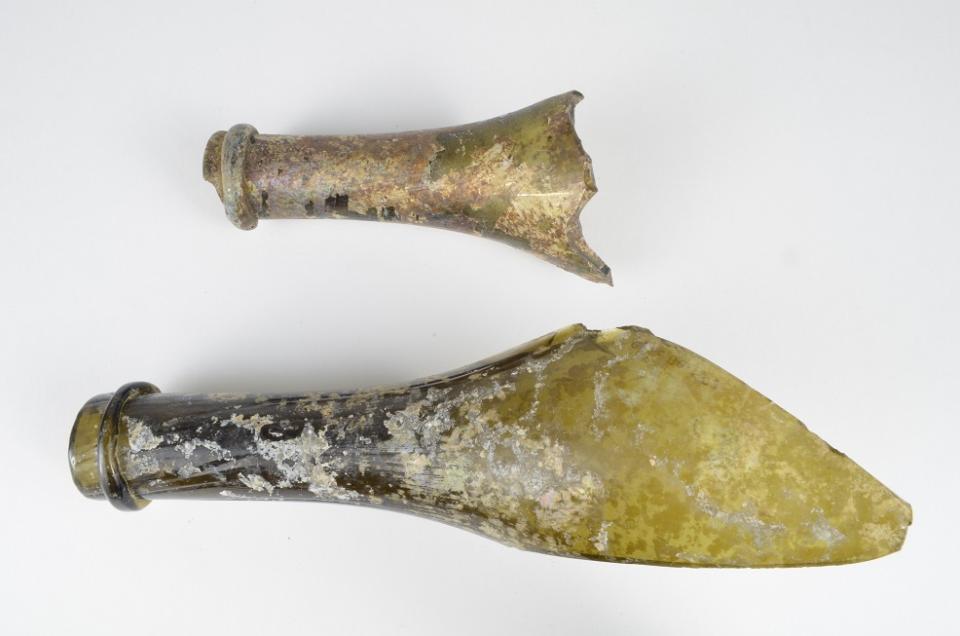
[H]A: 18.0cm B: 11.2cm __[L] __[W]A: 5.5cm B: 5.3cm __[Th] __[Diam]A: 3.2cm B: 3.0cm (Lip)
Two bottle neck fragments made of partially opaque, dark olive glass. One is a slightly smaller fragment than the other, but both are examples of turn moulded champagne bottle necks. They have round, string rim lips positioned slightly below the bottle rims, but the lip on the larger bottle is flattened somewhat more than the other. The bottle openings are round. Both fragments are jaggedly broken off partway down the shoulders and slightly into the body. The smaller neck piece is missing most of its rim. Both fragments have thin, indented lines in their surfaces that curve around the neck beginning at the shoulders. Based on the shapes of the fragments, the original vessels were likely cylindrical with champagne-style shoulders that gradually slope outwards from the neck. The surfaces of the fragments are quite deteriorated, with lots of discoloured flaking and an iridescent sheen throughout.
Even though they are only partial, these two bottle necks provide insight into several bottle-making techniques and characteristics. The two bottle necks consist of "champagne" finishes, which include flat-topped lips with string rims. A string rim is the extra ring of glass just beneath a bottle's lip, and it can be created using a mould or with the manual addition of glass during production. The champagne-style shoulders of these two fragments are also visible, which means that their original vessels would have had longer, tapered shoulders as opposed to the more distinct, round shoulders of wine bottles. The two bottle necks were likely turn-moulded, or paste-moulded, which refers to their manufacturing process. Turn-moulded bottles always have circular cross sections and are usually quite smooth and symmetrical. Most vessels created with this process are from the late 19th and early 20th centuries and are usually wine or champagne bottles.
